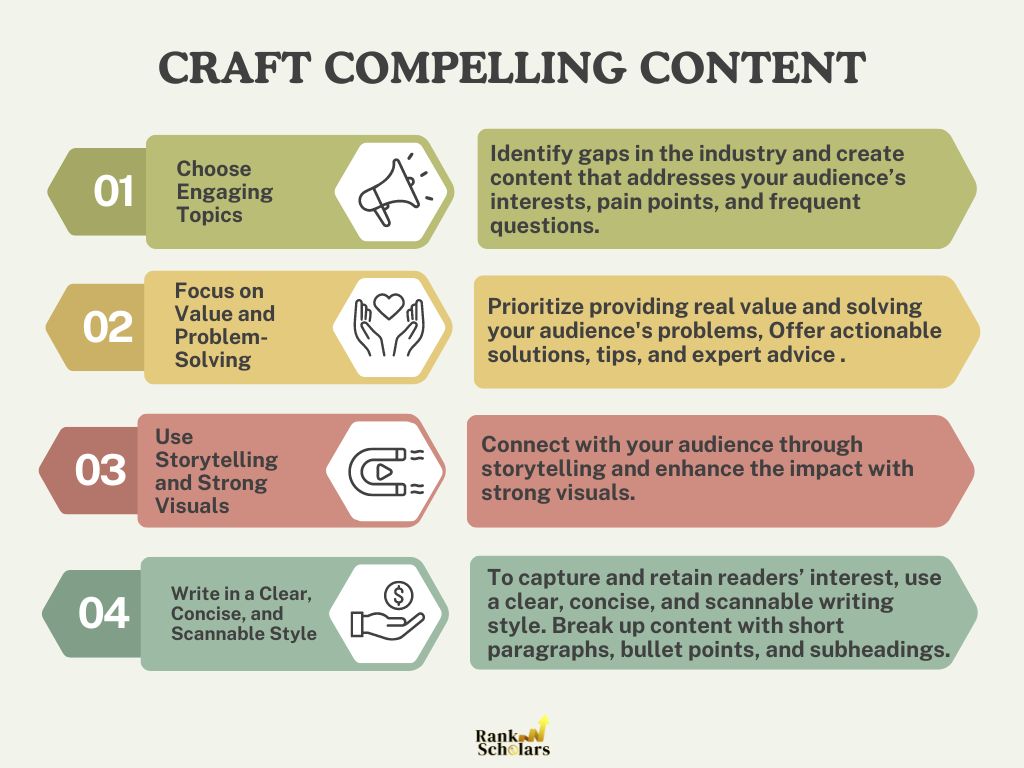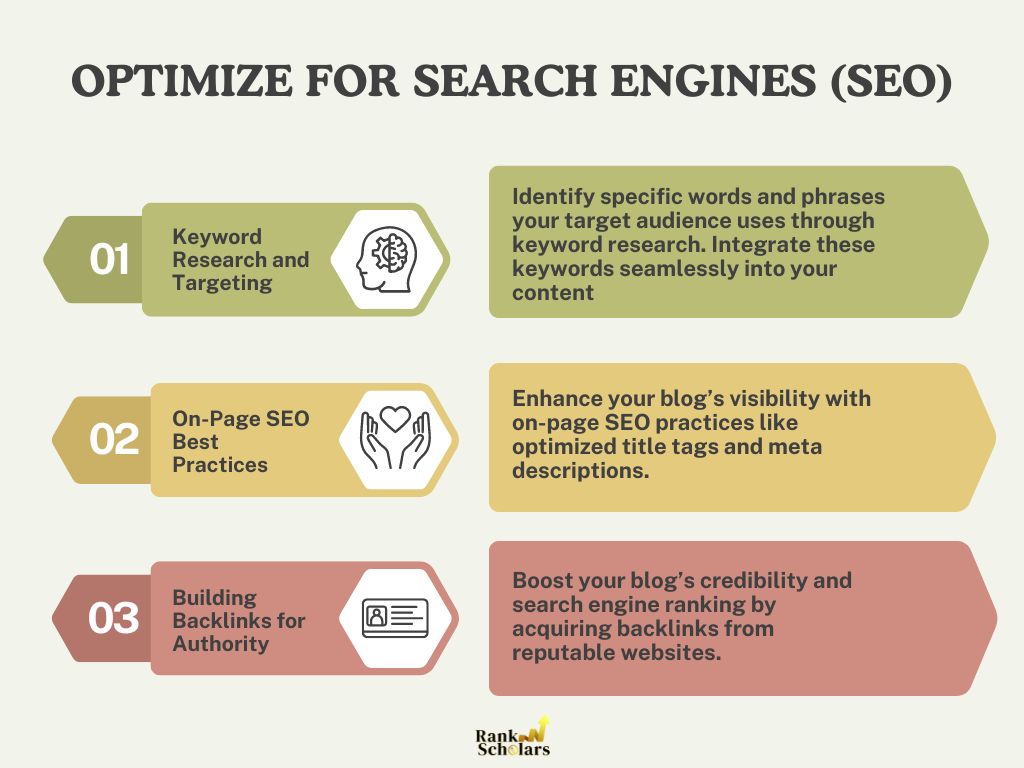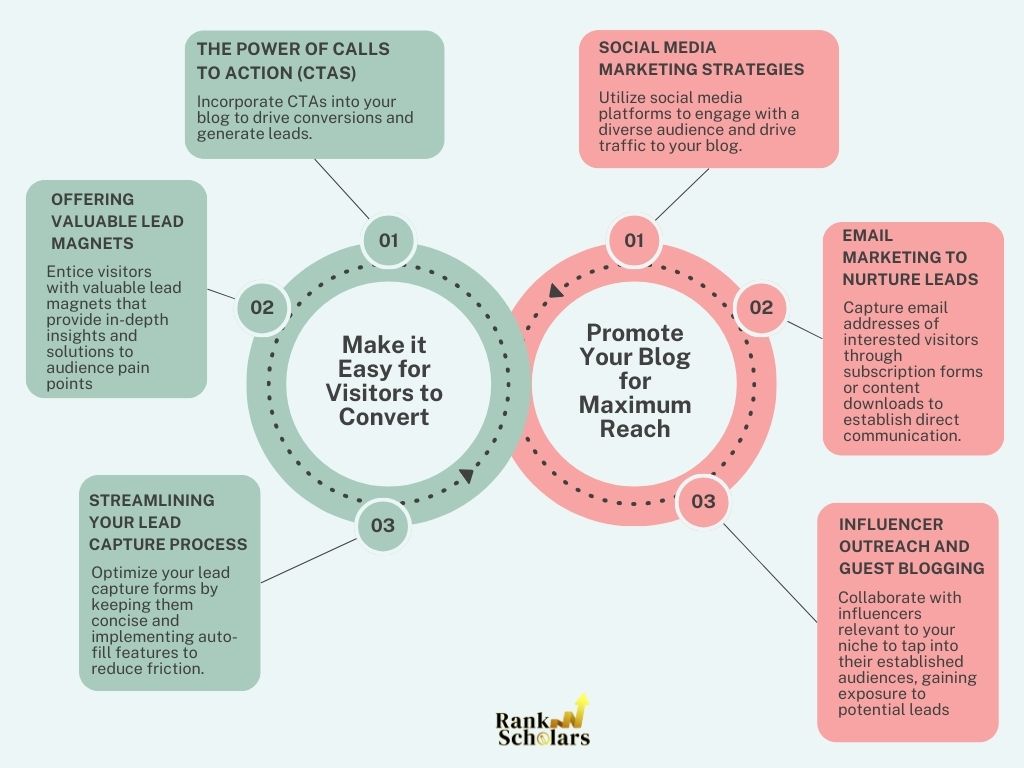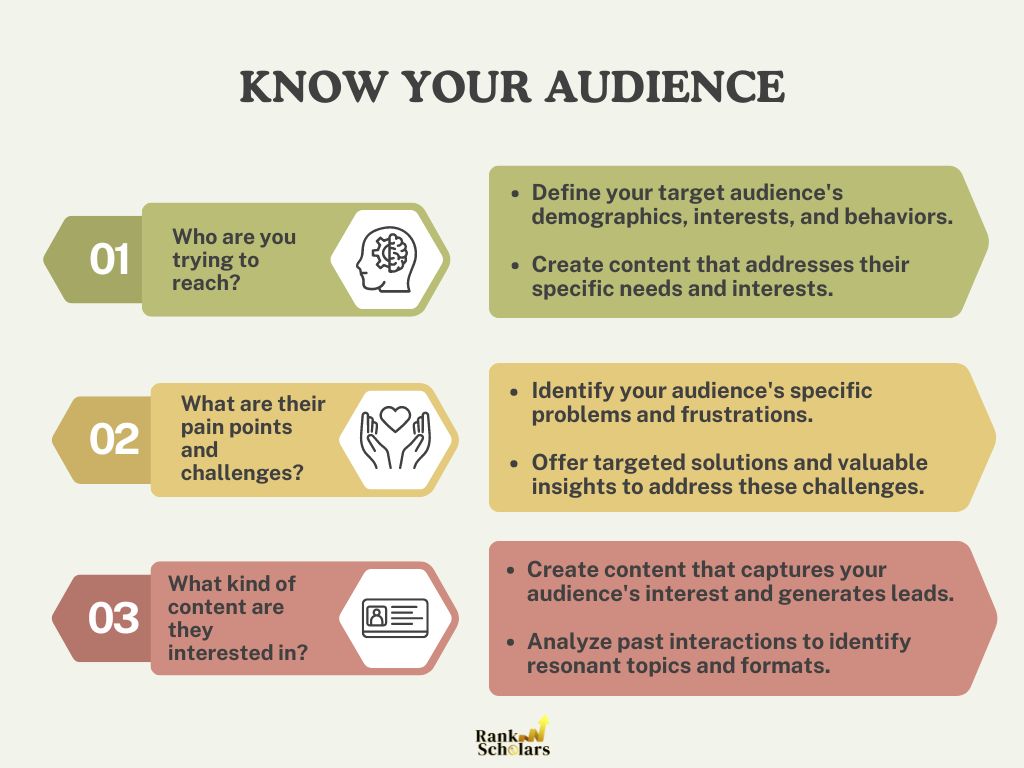According to HubSpot reports, marketers who prioritize blogging have a 13x higher chance of seeing a good ROI.
Crafting a blog that generates leads is an effective strategy, however many marketers struggle to achieve this. It takes both analytical knowledge and creative abilities for effective blog lead generation.
You must have a clear understanding of your target audience and what exactly their pain points are. Creating blog posts that solve those pain points boosts the process of lead generation.
With a knowledge of SEO that drives organic traffic and a clear CTA (call to action) along with producing high-quality content that informs and entices readers, you have the opportunity to nurture potential leads through the sales funnel.
Now, you might feel overwhelmed with all this information.
In this blog, we have discussed how to write a blog that generates leads and also some actionable insights and practical tips that not only attract readers but also convert them into valuable leads.
STEP 1: Know Your Audience
Knowing your audience is the cornerstone of crafting a blog that not only attracts visitors but also converts them into leads.
By identifying their needs, preferences, and pain points, you can tailor your content to resonate with them, and build trust, and without it, your content is likely to miss the mark. This targeted approach enhances engagement and boosts your lead-generation goals.
Who are you trying to reach?
The first step of knowing your audience begins with defining the demographics, interests, and behaviors of the people you want to reach.
Are they young professionals seeking career advice, young adults looking for financial hacks, or small business owners in need of marketing tips?
Or maybe you’re targeting parents looking for parental resources, fitness enthusiasts seeking workout plans, or foodies in search of new tasty yet healthy recipes.
Understanding who you are trying to reach helps you craft content that speaks directly to your audience’s needs and interests. By pinpointing your ideal reader, you can create more relevant and valuable content, ultimately driving higher engagement and conversions.
What are their pain points and challenges?
The second step of knowing your audience is identifying their pain points and the exact challenges they face. These pain points are the specific problems or frustrations your readers struggle with.
By understanding these challenges, you can offer targeted solutions and valuable insights that demonstrate your expertise and empathy.
For example, suppose your audience consists of small business owners struggling with limited marketing budgets and a lack of time for strategy planning. By understanding these challenges, you can offer specific solutions such as cost-effective marketing tips and time management strategies.
This not only helps in building a strong connection with your audience but also positions your blog as a trusted resource.
What kind of content are they interested in?
To effectively engage your audience and generate leads, you need a definite piece of content
that captures their interest.
Analyze past interactions, such as comments, shares, and engagement metrics, to identify which topics and formats resonate most with your audience.
For instance, if you’re running a fitness blog for busy professionals, going through the past interactions and analytics you might find they engage most with quick workout routines, meal prep tips, and stress management techniques.
From these insights, you can refine your content strategy. For example, crafting posts like “10-Minute Workouts for Busy Days” or “Meal Prep Hacks for Healthy Eating on the Go” aligns perfectly with their interests, boosting engagement and ultimately driving more leads.
Also Read: 10 Reasons Why Content Marketing Is Important For B2B Brands
STEP 2: Craft Compelling Content

Crafting content that captivates your audience is a successful lead-generation strategy. Create pieces that captivate, educate, and inspire action from your audience.
Whether you’re addressing pain points, offering solutions, or sharing valuable insights, your blog content must resonate with readers, drawing them in and keeping them engaged.
Choose engaging topics
One of the best ways to generate qualified leads from your blog is to find a gap in the industry and produce content based on that.
Choose blog topics that speak about your audience’s interests, pain points, and the questions they frequently ask. Utilize tools like keyword research and social listening to identify trending subjects and gaps in existing content.
By creating such engaging posts you not only attract attention but also provide valuable insights and solutions to your audience. It makes them more likely to trust your brand and convert into leads.
For example, if you run a marketing blog and notice a surge in searches for “AI in digital marketing,” writing plenty of blogs on “How AI is Revolutionizing Digital Marketing” could captivate your readers.
Focus on value and problem-solving
If you post only thinking about generating leads and often promoting your product or service, it is not going to work in your favor.
When crafting content, prioritize providing real value, and solving your audience’s problems. Offer actionable solutions, insightful tips, and expert advice that can make a tangible difference in their lives.
By focusing on value-driven and problem-solving content, you position your blog as a trusted resource.
For instance, imagine a software company specializing in graphic design tools. Their blog could feature tutorials addressing common user struggles, such as mastering specific features or troubleshooting common errors.
Use storytelling and strong visuals
Storytelling and compelling visuals have a profound impact on your audience. Storytelling is a powerful tool for connecting with your audience on a deeper level.
Complementing your stories with strong visuals further enhances the impact, grabbing attention and enhancing comprehension. Whether through images, infographics, or videos, visual elements add richness to your storytelling, making it more engaging.
When combined effectively, storytelling and visuals create a holistic experience that not only educates but also entertains, leaving a lasting impression on your audience.
For example, if you’re writing a blog post about the journey of starting a small business, you can share your personal story of triumph or challenges with vibrant visuals of your products, BTS scenes etcetera. This blend of storytelling with visuals engages readers, educates them about entrepreneurship, and inspires them to become leads.
Write in a clear, concise, and scannable style
The average human attention span is 8.25 seconds. With such a short attention span readers often skim through content rather than thoroughly reading the blog word for word till the end.
To effectively capture and retain their interest, adopt a clear, concise, and scannable writing style.
Break up your content into short paragraphs, use bullet points and numbered lists to highlight key points, and employ subheadings to guide readers through the text.
Use of descriptive headings, bold text, and visuals to enhance readability and comprehension. By presenting information in a format that is easy to digest and navigate, you can keep your audience engaged, generate leads, and increase the conversion rate.
STEP 3: Optimize for Search Engines (SEO)

Mastering the art of Search Engine Optimization (SEO) is the gateway to visibility, traffic, and ultimately, lead generation. When crafting a blog aimed at generating leads, optimizing it for search engines becomes paramount.
SEO isn’t merely about including your content with keywords here and there, it’s a strategic blend of technical skill, compelling storytelling, and understanding your audience’s search intent.
Keyword research and targeting
One of the most effective SEO strategies is keyword research and targeting. It involves identifying the specific words and phrases that your target audience is using when searching for information related to your niche.
Using keyword research tools and analyzing search trends can uncover valuable insights into the language and terminology your potential leads are using. With this knowledge, you can integrate these keywords into your blog content to signal relevance to search engines.
However, do not stuff your content with keywords every chance you get, instead seamlessly weave them into your narrative to enhance readability. This provides genuine value to your audience and maximizes your blog’s potential to attract qualified leads.
On-page SEO best practices
On-page SEO enhances your blog’s visibility and appeal to search engines. Title tags and meta descriptions are the best practices of this strategy.
Title tags that appear in search engine results are clickable headlines. Title tags are concise yet descriptive incorporating primary keywords to signal relevance to search engines and entice users to click.
Meta descriptions, play a vital role in user engagement by providing a brief, compelling summary of your blog’s content. Other key on-page factors include header tags (H1, H2, H3), which help structure your content for readability and SEO.
Ensure your content includes keyword-rich, yet naturally flowing, text and utilizes internal and external links for credibility and user engagement.
Building backlinks for authority
Building backlinks for authority is an effective SEO strategy, it significantly boosts your blog’s credibility and search engine ranking.
Backlinks, or inbound links from other reputable websites, act as endorsements for your content. Digital PR is a powerful method to acquire these valuable links by promoting your blog through press releases, guest posts, and media outreach to garner coverage from high-authority sites.
Focus on quality over quantity, and ensure your backlinks come from sites with strong domain authority and relevance to your niche.
Factors such as the anchor text used, the diversity of linking domains, and the contextual relevance of the backlinks all play pivotal roles in establishing your blog’s authority and improving its visibility on search engine results pages.
Also Read:20 Content Marketing Books to Make $$$$$
STEP 4: Make it Easy for Visitors to Convert
The easier you make it for your readers to take quick and straightforward action, the more likely they will convert, whether it’s signing up for a newsletter, downloading a resource, or making a purchase.
Simplifying the conversion process is crucial to turning casual readers into loyal customers.
The power of Calls to Action (CTAs)
Calls to Action (CTAs) are vital in driving conversions on your blog. Never forget to include CTA in your blog to generate leads.
A well-crafted CTA guides your visitors toward taking the next step, whether it’s subscribing to a newsletter, starting a free trial, or making a purchase.
Effective CTAs are clear, concise, and compelling, often using action-oriented language that creates a sense of urgency. They should be prominently placed and visually distinct to capture attention immediately.
By including strong CTAs throughout your content, you can significantly enhance your blog’s ability to convert visitors into leads.
Offering valuable lead magnets (e-books, white papers, etc.)
Enticing visitors with valuable lead magnets is a powerful way to encourage conversions. These resources include e-books or white papers.
These lead magnets offer in-depth insights and solutions to your audience’s pain points, positioning your brand as an authority in your niche.
When crafting these lead magnets, focus on providing genuine value and actionable advice that addresses specific challenges your audience faces. Ensure they are well-designed, professionally written, and visually appealing to capture attention.
By offering high-quality resources in exchange for contact information, you provide immediate value and establish a foundation for nurturing leads into long-term relationships.
Streamlining your lead capture process
Streamlining your lead capture process is essential for maximizing conversions. Start this process by optimizing your lead capture forms.
Keep them concise, asking for only essential information to reduce friction. Implementing auto-fill features can further expedite the process.
Strategically place these forms throughout your blog, ensuring they’re visible but not intrusive. Utilize pop-ups sparingly, targeting specific user actions or exit intents.
Testing different variations and placements can help you identify the most effective methods for your audience. By simplifying the lead capture process, you create a seamless experience that encourages visitors to take action without hesitation.
Step 5: Promote Your Blog for Maximum Reach

Creating a blog post is just the beginning, you need to ensure your content reaches the widest audience possible. And that’s when the art of promotion comes into play.
Social media marketing strategies
There is a huge role of social media when it comes to your blog’s reach and generating leads. Social media platforms like Facebook, Twitter, Instagram, and LinkedIn allow you to engage with a diverse audience and drive traffic to your blog.
With engaging elements like memes, gifs, videos, catchy captions, and relevant hashtags you can make your posts stand out. Engage with your followers by responding to comments, initiating conversations, and sharing valuable insights.
Consider investing in targeted advertising to reach specific demographics. By using social media marketing in your promotional efforts, you can enhance the visibility and impact of your blog, ultimately driving leads and conversions.
Email marketing to nurture leads
Email marketing serves as a powerful tool to generate leads through your blog. By capturing the email addresses of interested visitors through subscription forms or content downloads, you establish a direct line of communication.
Craft targeted email campaigns that provide valuable insights, resources, and exclusive offers tailored to the interests and needs of your leads.
Keep in mind that personalization is key and address recipients by name & segment your email list based on their preferences and behaviors.
Utilize automation to deliver timely messages, such as welcome emails or drip campaigns, ensuring consistent engagement and nurturing prospects toward conversion.
Influencer outreach and guest blogging
Influencer outreach and guest blogging are potent tools in your arsenal for expanding your blog’s reach.
By collaborating with influencers relevant to your niche, you tap into their already established audiences, gaining exposure to potential leads who trust their recommendations.
Similarly, guest blogging on reputable platforms allows you to tap into existing communities and establish your authority in the field. It’s a symbiotic relationship, where you provide valuable content to the host platform’s audience while also driving traffic back to your own blog.
STEP 6: Track Your Results and Optimize
Tracking your results and optimizing your strategies is not just a recommendation, it’s an absolute necessity. Without clear insights into what’s working and what’s not, you’ll not be successful increase blog’s reach and generating leads
Using analytics to measure success
Using analytics tools like Google Analytics or social media insights, you gain invaluable insights into audience behavior, engagement metrics, website visitors, and conversion rates.
By meticulously analyzing these data points, you uncover what content resonates most with your target audience, which channels drive the most traffic, and where leads are most likely to convert.
With this knowledge, you can refine your blogging strategy, doubling down on what works and working on the areas that need improvement. Leveraging analytics empowers you to optimize your content and tactics, and it drives greater lead generation and fosters long-term growth.
A/B testing different elements of your blog
A/B testing different elements involves crafting variations of key components such as headlines, call-to-action buttons, or even layout designs, then systematically comparing their performance.
By conducting these experiments, you gain invaluable insights into what resonates most with your audience.
Does a punchier headline garner more clicks?
Does a vibrant color scheme enhance engagement?
A/B testing enables you to understand what really is working, allowing you to optimize your blog for maximum impact and lead generation. This process allows you to refine your blog content continuously and helps to convert visitors into valuable leads.
Continuously improve your content strategy
Continuously improving your content strategy is a sustainable way to lead generation through blogging. It involves a cycle of analysis, adaptation, and innovation.
By evaluating the performance of your content, you get to know about insights into your audience’s preferences and behavior. Armed with this knowledge, you can refine your approach, fine-tune your messaging, and tailor your content to better resonate with your target audience.
Embrace experimentation, feedback, and the latest digital content creation trends. By improving your content continuously you optimize your lead generation efforts and cultivate a deeper connection with your audience.
Leave It All To Rank Scholars!
You might feel a bit overwhelmed by all this information but do not worry. Leave it all to Rank Scholars.
At Rank Scholars, we specialize in crafting quality blog posts that convert readers into loyal customers. Our team of content marketing experts understands the nuances of engaging storytelling and SEO optimization, making sure that your blog attracts traffic along with driving meaningful conversions.
With our strategic approach, we help you build a powerful online presence and create a meaningful connection with your target market. Let us handle your content needs, freeing you to focus on what you do best—running your business.
Ready to boost your lead generation efforts? Contact Rank Scholars today and elevate your business forward.

Sahanaj is a content writer who is passionate about turning ideas into words that inspire positive change.




